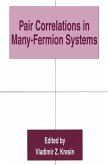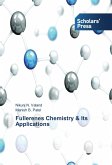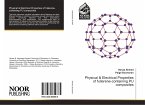High Quality Content by WIKIPEDIA articles! The Prato reaction in fullerene chemistry describes the functionalization of fullerenes and nanotubes with azomethine ylides in a 1,3-dipolar cycloaddition. The amino acid sarcosine reacts with paraformaldehyde when heated at reflux in toluene to an ylide which reacts with a double in a 6,6 ring position in a fullerene in a 1,3-dipolar cycloaddition to yield a N-methylpyrrolidine derivative or pyrrolidinofullerene or pyrrolidino3,4:1,2 [60]fullerene in 82% yield. This method is also used in the functionalization of single wall nanotubes. When the amino acid is modified with a glycine chain the resulting nanotubes are soluble in common solvents such chloroform and acetone. Another characteristic of the treated nanotubes is their larger aggregate dimensions compared to untreated nanotubes. Just as in other fullerene reactions like the Bingel reaction or Diels-Alder reactions this reaction can be reversed.
Bitte wählen Sie Ihr Anliegen aus.
Rechnungen
Retourenschein anfordern
Bestellstatus
Storno








